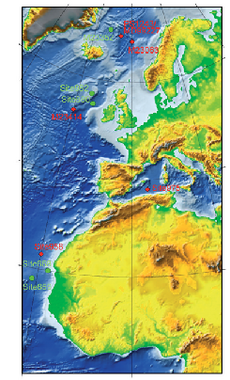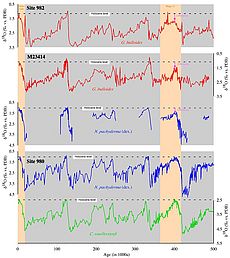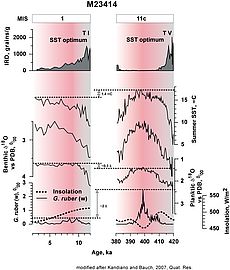Contact: Dr. Henning Bauch
Dr. Evgeniya Kandiano
Within the community of scientists working on climate change it is widely believed that marine isotope stage 11, an interglacial climate period centered around 400 ka, can in many ways be seen as the Pleistocene equivalent to the recent interglacial conditions of the Holocene. However, in contrast to this perception a number of paleoceanographic studies from the high-northern latitudes point to systematic differences in the character of atmospheric and oceanic circulation during these two interglacial intervals (see Figs. 2 and 3).
The goal of the ongoing studies is therefore to evaluate whether isotopic stage 11 may indeed be taken as the adequate interglacial model to describe present and future Holocene climate change. Using a comparative approach by analysing sea surface conditions during stages 11 and 1 in the Northeast Atlantic it is investigated to what extent a fundamentally different character of the atmospheric and oceanic circulation may have determined the specific climate difference between these two warm periods (see also: pdf file).





